Battle-Cruiser U.S.S. United States (Lexington) Layout Blueprint - Drawing 413 - Edward H. Wiswesser


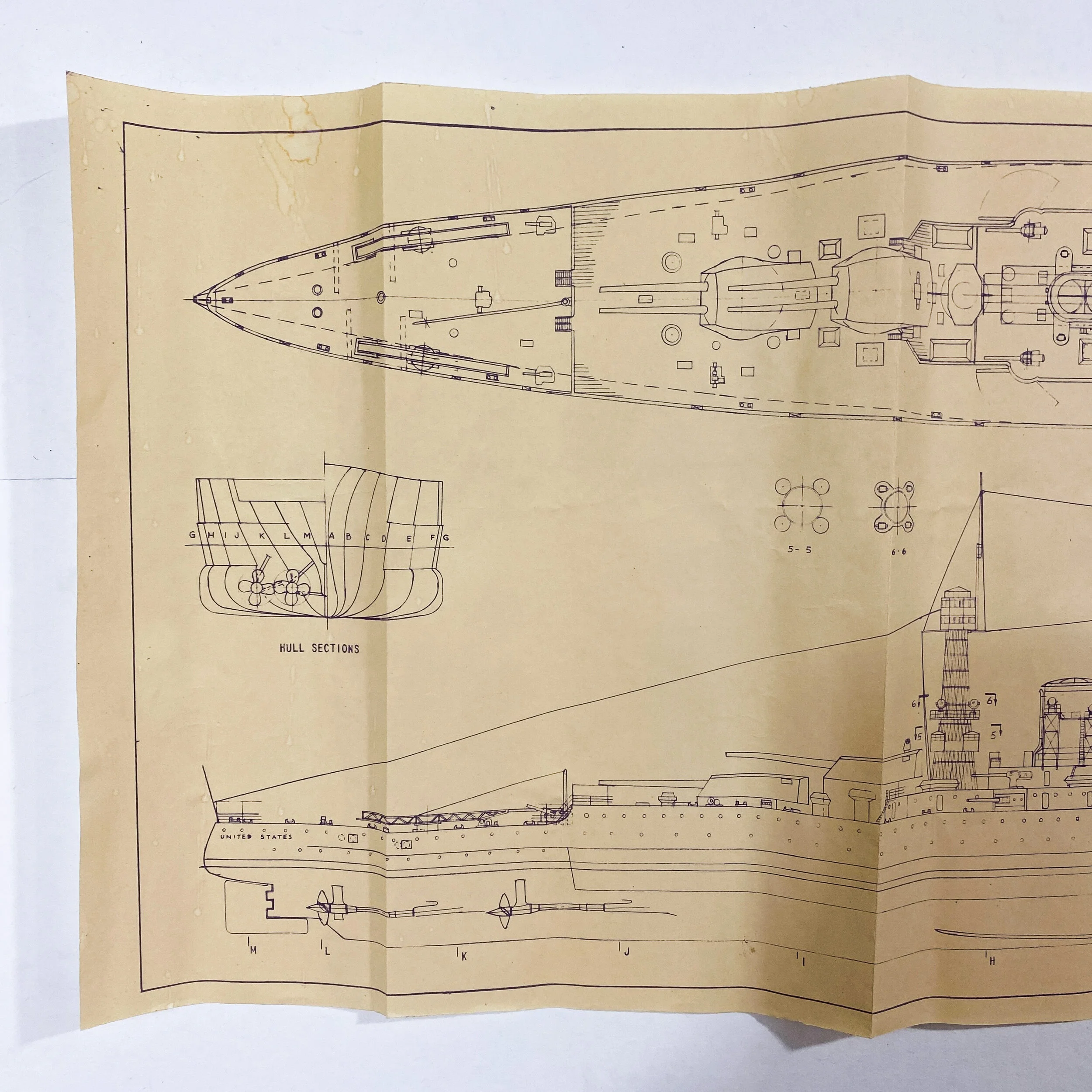


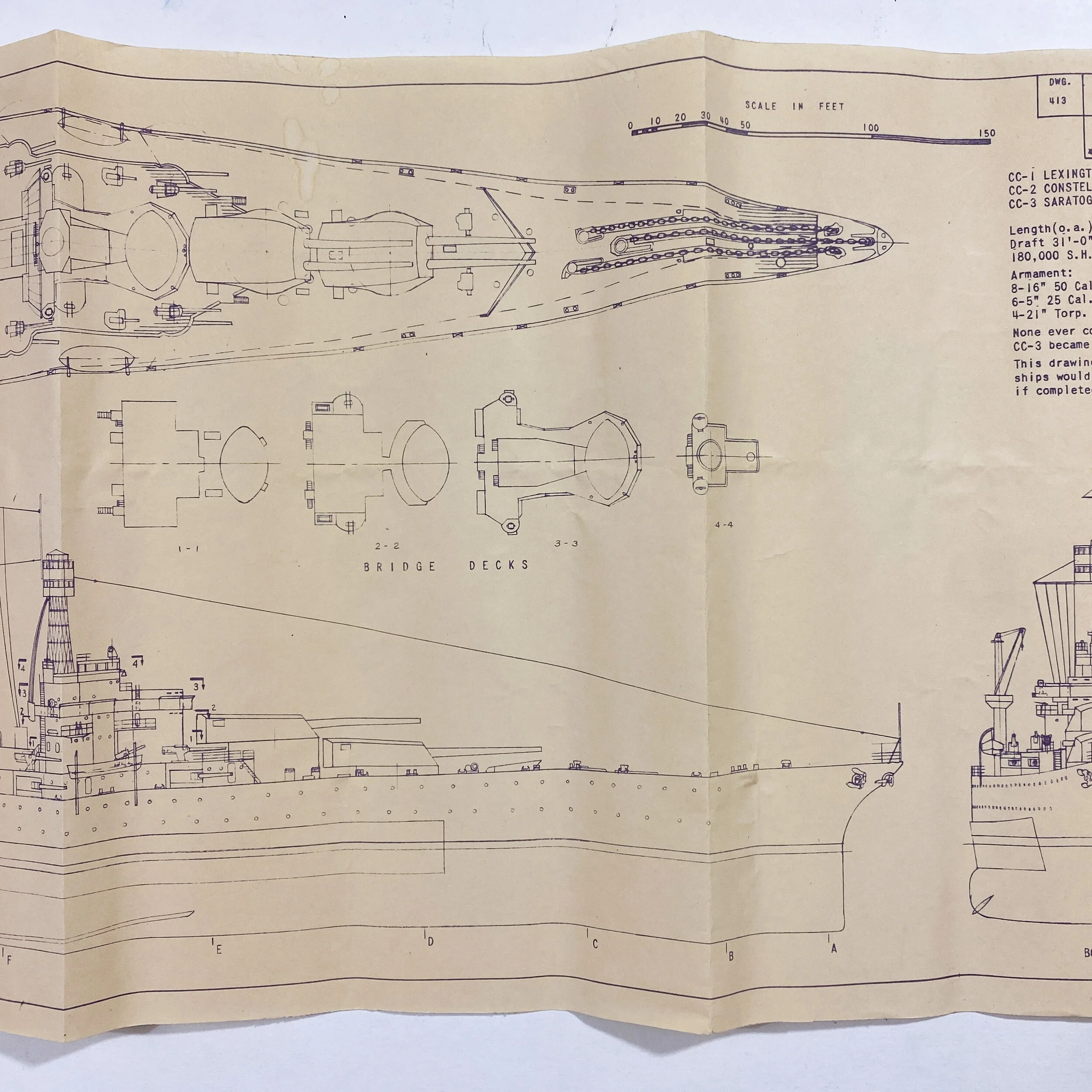

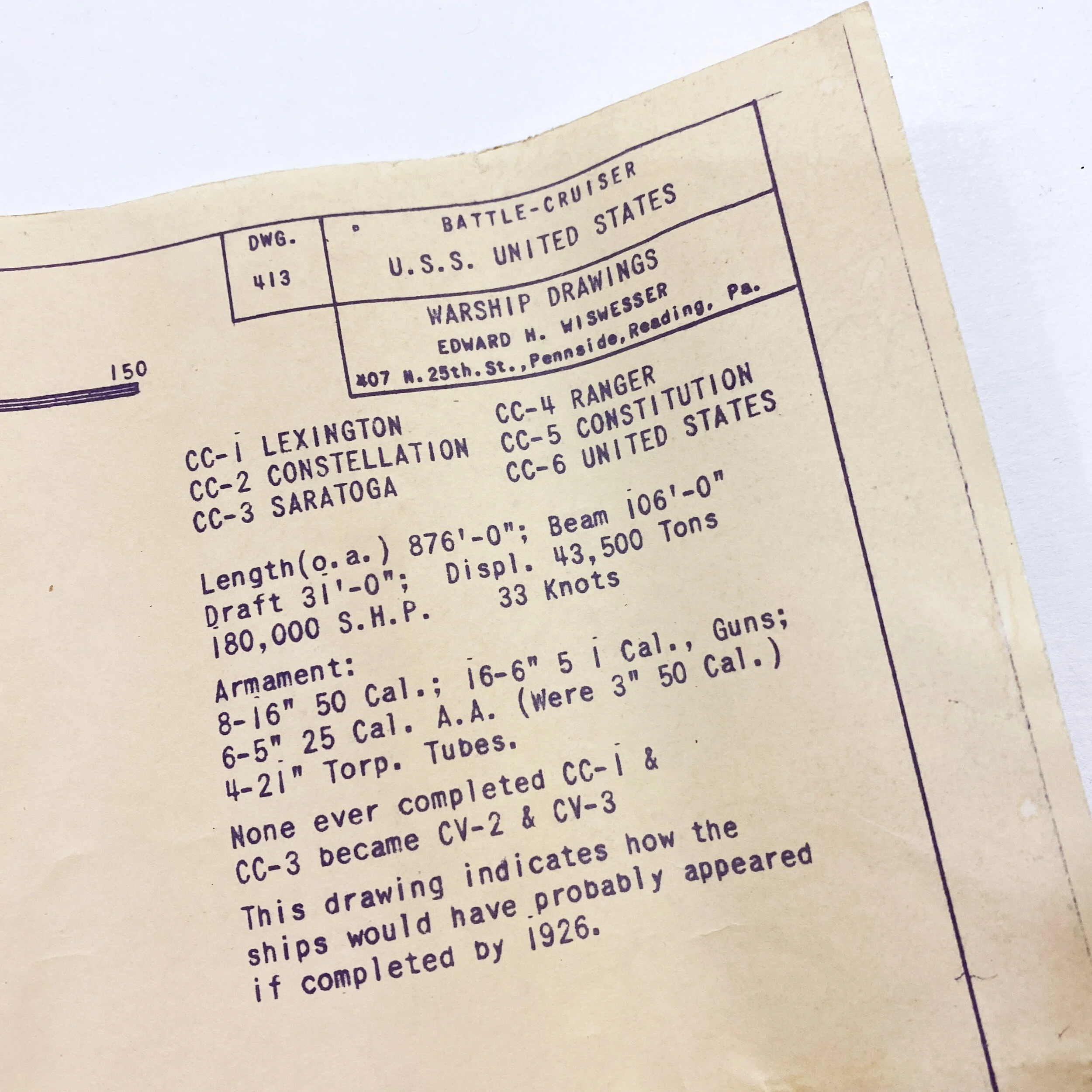








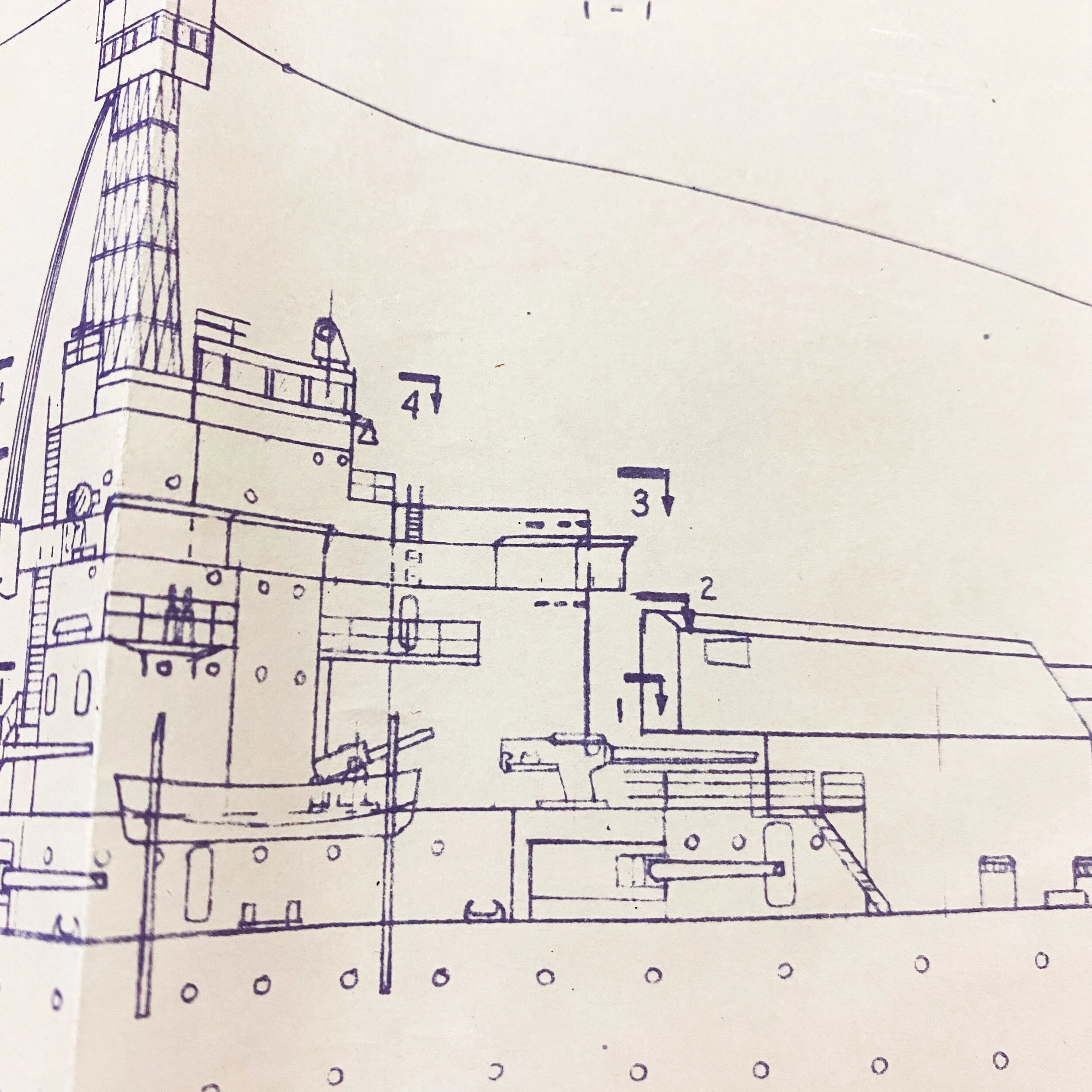
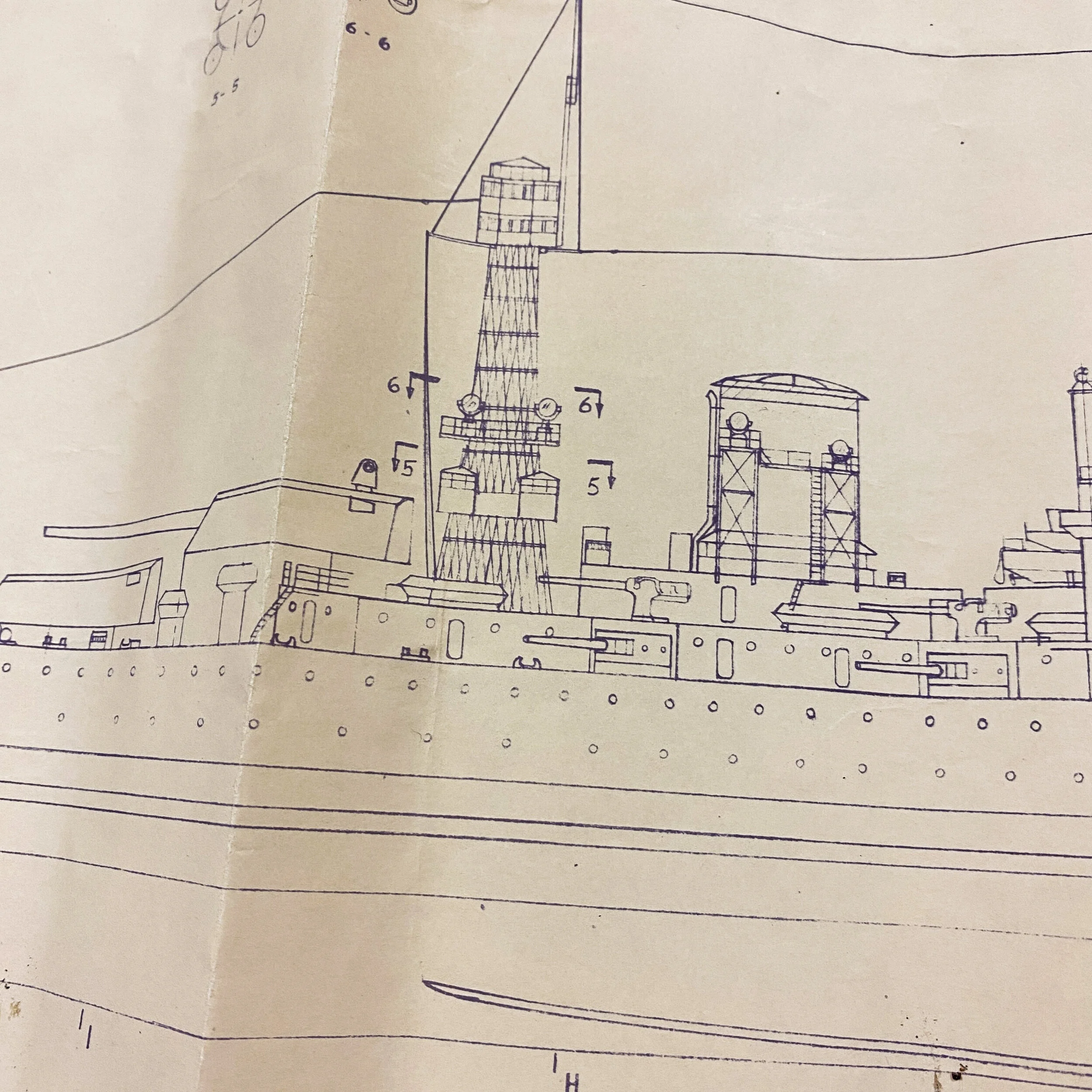
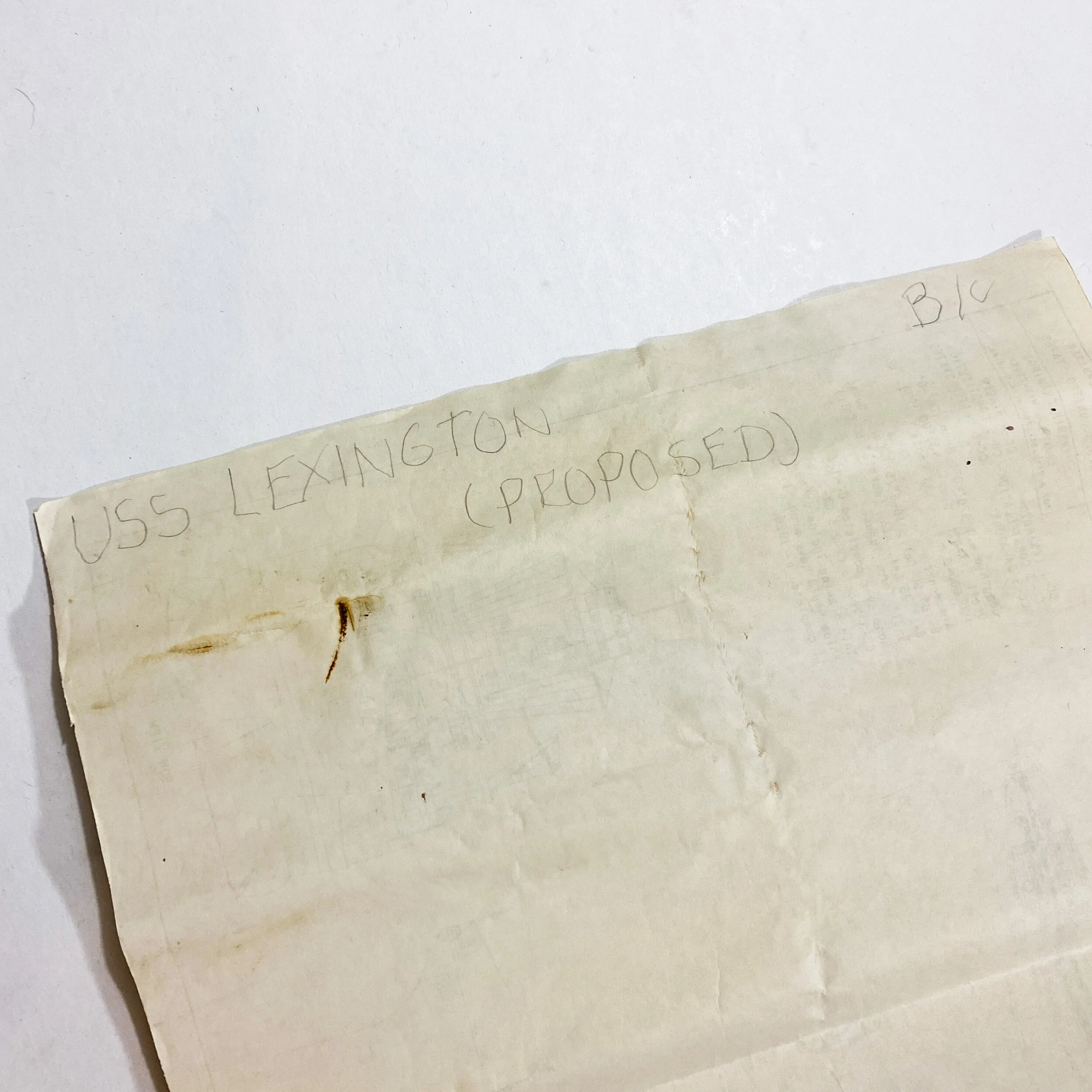
Battle-Cruiser U.S.S. United States (Lexington) Layout Blueprint - Drawing 413 - Edward H. Wiswesser
Size: 12 x 33.5 inches
This blueprint comes from the blueprint collection of the famous Edward H. Wiswesser. From 1940-1946, Edward H. Wiswesser worked at the Philadelphia Naval Yard designing warships for the United States Navy, specializing in Iowa-class battleships including his direct hand in designing the Battleships USS New Jersey and the USS Wisconsin. His design of the USS New Jersey was one of the Iowa-class "fast battleship" designs planned in 1938 by the Preliminary Design Branch at the Bureau of Construction and Repair. She was launched on December 7th of 1942 (the first anniversary of the attack on Pearl Harbor) and was commissioned on 23 May 1943. The ship was the second of the Iowa class to be commissioned by the U.S. Navy. The USS New Jersey (BB-62) ("Big J" or "Black Dragon") was the second ship of the United States Navy to be named after the US state of New Jersey. New Jersey earned more battle stars for combat actions than the other three completed Iowa-class battleships, and was the only US battleship providing gunfire support during the Vietnam War. During World War II, New Jersey shelled targets on Guam and Okinawa, and screened aircraft carriers conducting raids in the Marshall Islands. Edward H. Wiswesser other design of the USS Wisconsin (BB-64) is an Iowa-class battleship, the second ship of the United States Navy to be named in honor of the U.S. state of Wisconsin. She was built at the Philadelphia Naval Shipyard in Philadelphia, Pennsylvania and launched on December 7, 1943 (the second anniversary of the Pearl Harbor raid), sponsored by the wife of Governor Walter Goodland of Wisconsin. During her career, Wisconsin served in the Pacific Theater of World War II, where she shelled Japanese fortifications and screened United States aircraft carriers as they conducted air raids against enemy positions.
This specific blueprint is labeled as drawing number 413 and is titled “Battle-Cruiser U.S.S. United States’. The blueprint itself is also title ‘Warship Drawings’ and contains the name of Edward H. Wiswesser himself. The blueprints for this specific battleship are in conjunction with CC-1 Lexington, CC-2 Constellation, CC-2 Saratoga, CC-4 Ranger, CC-5 Constitution, and CC-6 United States. The blueprint contains some of the most detailed and intricate constructional layouts of the ship as well as detailed measurements of its length, knot speed, arraignment, guns and turret attachments. The blueprint itself is in relatively good condition for its age with minor creasing and tears. One the back of the blueprint is the writing of Edward H. Wiswesser with the annotation “U.S.S. Lexington - Proposed”. The six Lexington-class ships were named Lexington, Constellation, Saratoga, Ranger, Constitution, and United States and were designated CC-1 through CC-6, with "CC" signifying their status as battlecruisers. Although the class was planned to be the U.S.'s first battlecruisers, it was not of a new design; instead, it expanded upon already-existing 10,000–14,000 ton cruiser designs.
The USS Lexington was the lead ship of the Lexington-class battlecruisers, and the first battlecruiser commissioned by the US Navy. Almost immediately she was recognized as the "Yankee Hood", as she shared many design elements with the British Hood Class, including the Turret layout, and dual funnels. However, the Lexington was superior in the fact that she had heavier deck armor, and larger 16in guns, borrowed directly from the Colorado-class Battleship.
She was commissioned with basket weave masts, one of the final classes to do so. However, during her shakedown cruise in the Caribbean, her forward mast was heavily damaged in a hurricane, to the point that it later collapsed. Luckily no one was hurt, but this led to US ships being refit with Tripod masts.
In 1934, she would be refit with said Tripod masts, and have her forward deck be reinforced by 1.5in of steel. She would also have 8 Dual Purpose 5/38in turrets installed. During 1931, and 1937, she would be the flagship of the American Mediterranean fleet. In 1938, she underwent another modernization, being equipped with a brand new superstructure resembling that of the new South Dakota class ships. During 1938, she was sent as the flagship of the division of warships sent by the United States to the British Silver Jubillee.
This United States Navy blueprint of one of the most infamous ships of WWII would make an amazing addition to any World War II or U.S. Navy collection.